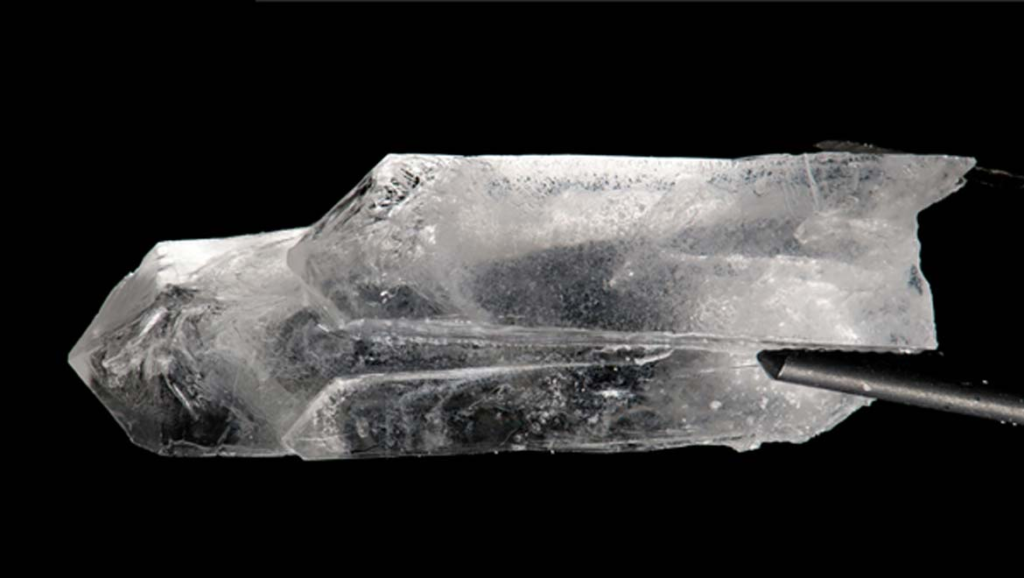Exploring Space-Time Crystals: A New Type of Matter
Space-time crystals, or time crystals, are one of the most exciting discoveries in physics. They are a completely new type of matter that behaves in a way we’ve never seen before. Imagine something that can move in a repeating pattern forever without losing energy. It might sound like magic or science fiction, but this is exactly what time crystals do. Let’s break it down to understand what they are, why they matter, and what they could mean for the future.
What Are Time Crystals?

To understand time crystals, let’s first talk about regular crystals. In crystals like diamonds or salt, the atoms are arranged in repeating patterns in space. For example, if you zoom in on a diamond, you’ll see the same pattern of atoms repeating over and over in three dimensions.
Time crystals are similar, but instead of patterns repeating in space, they repeat in time. This means their state changes and goes back to the way it was in a perfect, repeating cycle – forever. What makes this so strange is that it happens without using any energy. This goes against what we normally see in the world. For example, a pendulum swings back and forth, but it eventually stops because it loses energy. Time crystals don’t stop. They keep “ticking” without slowing down.
How Were Time Crystals Discovered?
The idea of time crystals was first suggested by a physicist named Frank Wilczek in 2012. Scientists initially thought they were impossible because they seemed to break the rules of physics. But in 2016, researchers found a way to create them in the lab. They used special systems, like super-cooled atoms or trapped ions, to observe this strange behavior.
In these experiments, the particles inside the time crystal interact in a way that makes them repeat their motion without any external push. This is what makes time crystals so unique – they move forever, but not in the usual sense of motion.
Why Are Time Crystals Important?
Time crystals aren’t just weird; they could be incredibly useful in many areas:
- Quantum Computing:
- Quantum computers rely on stable systems to perform calculations. Time crystals could act as super-stable “building blocks” for quantum computers, making them faster and more reliable.
- Energy Efficiency:
- Because time crystals don’t lose energy like normal systems, they might inspire new ways to store and use energy more efficiently.
- Better Clocks:
- Time crystals could lead to extremely accurate timekeeping, improving things like GPS systems and scientific measurements.
- New Materials:
- Time crystals could help scientists create new materials with properties we can’t even imagine yet, opening up new possibilities in technology and engineering.
What Makes Time Crystals Special?
Here are a few reasons time crystals are so fascinating:
- They Break Time Symmetry:
- Most systems in physics behave the same way over time unless something changes them. Time crystals naturally repeat their state, breaking this “time symmetry.”
- They Don’t Use Energy:
- Normally, things need energy to keep moving. Time crystals don’t, making them different from anything else we’ve seen.
- They’re Quantum Systems:
- Time crystals exist because of quantum mechanics, the branch of physics that deals with very tiny particles. This means they don’t follow the usual rules of classical physics.
Challenges in Working with Time Crystals
Although time crystals sound amazing, there are still many challenges:
- Creating Them:
- Time crystals can only exist under very specific conditions, like extremely cold temperatures or in carefully controlled environments.
- Fragility:
- Time crystals are sensitive to disturbances. Even a tiny amount of outside interference can disrupt their behavior.
- Scaling Up:
- So far, time crystals have only been created at microscopic scales. Scientists are still working on ways to make them larger and more practical.
What Do Time Crystals Mean for Physics?
Time crystals challenge some of the most basic ideas in physics. For example, they make us rethink how we understand time and motion. Normally, we think of time as something that flows in one direction, and objects need energy to move through it. Time crystals show that this isn’t always true.
They also make us ask deeper questions, like: What is time? Why does it flow the way it does? And are there other strange states of matter waiting to be discovered?
The Future of Time Crystals
The study of time crystals is still in its early stages, but the future is full of possibilities. Here are some areas where they could have a big impact:
- New Technologies:
- Time crystals could lead to devices and machines that use energy in completely new ways, making them more efficient and powerful.
- Understanding the Universe:
- By studying time crystals, we might learn more about the fundamental laws of the universe, especially in areas like quantum mechanics and thermodynamics.
- Everyday Applications:
- One day, time crystals might be used in everyday technologies, like faster computers, better batteries, or even more advanced medical devices.
Conclusion
Time crystals are a groundbreaking discovery that shows us how much we still have to learn about the universe. They’re not just a strange new state of matter – they’re a doorway to new possibilities in science and technology. While there’s still a long way to go before we fully understand or use them, time crystals remind us of the endless potential of human curiosity and discovery. Who knows? They might one day change the world in ways we can’t even imagine.
